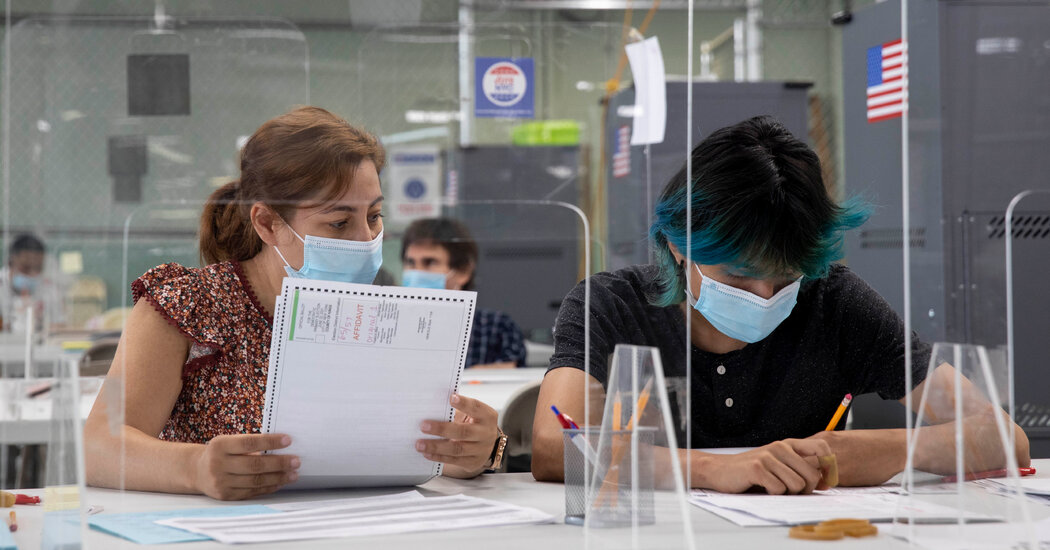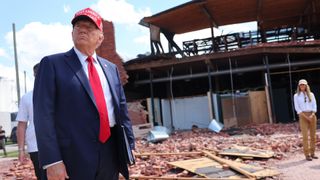Why New York’s Election Debacle Is Likely to Fuel Conspiracy Theories

It has been one week since the New York City Board of Elections botched the release of preliminary ranked-choice tabulations from the city’s mayoral race, counting 135,000 dummy ballots that employees had used to test a computer system and then failed to delete.
It was a stunning display of carelessness even from an agency long known for its dysfunction, and the reverberations will continue long after Tuesday evening, when Eric Adams was declared the winner of the Democratic primary race by The Associated Press. (You can follow the latest news here.) That’s because, while the mistake was discovered within hours and corrected by the next day, it provided purveyors of right-wing disinformation with ammunition as powerful as anything they could have invented.
Some supporters of former President Donald J. Trump quickly suggested that the results of the 2020 election might also have been miscounted. (Exhaustive investigations have made it very clear that they weren’t.) Senator Tom Cotton, Republican of Arkansas, called ranked-choice voting “a corrupt scam” — even though problems at the Board of Elections far predate it — and tweeted: “How can anyone trust that a voter’s fourth-place choice was accurately tabulated on the eighth round of ranking? Look at the debacle in New York City right now.” Mr. Trump himself suggested falsely that the true results would never be known.
“We had an election where we did much better than we did the first time, and amazingly, we lost,” Mr. Trump said at an event in Texas on Wednesday. “Check out the New York election today, by the way. They just realized it’s a disaster. They’re unable to count the votes. Did you see it? It just came out. They’re missing 135,000 votes. They put 135,000 make-believe votes in. Our elections are a disaster.”
The disinformation fueled by New York’s mistake may not end up being compelling to Americans who haven’t already bought into the lie that the 2020 election was stolen. But it is very likely, especially among New Yorkers, to undermine overall trust in public institutions — and that sort of distrust creates fertile ground for disinformation to grow.
“The average New York City Democrat probably doesn’t look to Donald Trump or Tom Cotton as a validator, but it does fit into that general narrative that’s been pushed into the ether for months,” said Melissa Ryan, the chief executive of CARD Strategies, a consulting firm that helps organizations combat disinformation and online extremism. “Trust in institutions is at an all-time low, and whenever something like this happens, folks who aren’t necessarily right-wing hard-liners or believers in conspiracies generally — it’s going to erode their trust with another institution.”
That’s significant, Ms. Ryan said, given that “people are susceptible to disinformation in part because they don’t trust institutions already, so they’re more inclined to believe the worst possible version.”
There is some irony to the possibility that the Board of Elections’ error will undermine trust in election results, because it in fact revealed how quickly an actual miscount becomes apparent.
The error should never have happened, but once it did, it “was detected less than hours after it was displayed,” said David J. Becker, the executive director of the Center for Election Innovation & Research. “And yet we are now eight months past the November election, and the losing presidential candidate still can’t present any evidence of any systematic fraud anywhere in the country. They’ve had eight months, and the New York City problem was detected in probably eight minutes.”
More to the point, because there is a paper trail, “we will get the right winner, just like we got the right winner in 2020,” Mr. Becker said. “If we can look at the facts of what happened and say, ‘Here’s where the structure failed, here’s where personnel failed, here’s where the process failed,’ and try to reform that, that would be a very, very positive outcome. But even with those mistakes, we’re going to get the correct answer.”
On Politics is also available as a newsletter. Sign up here to get it delivered to your inbox.
Is there anything you think we’re missing? Anything you want to see more of? We’d love to hear from you. Email us at onpolitics@nytimes.com.
*** This article has been archived for your research. The original version from The New York Times can be found here ***


